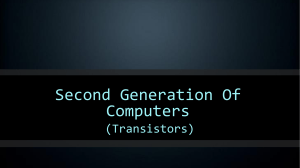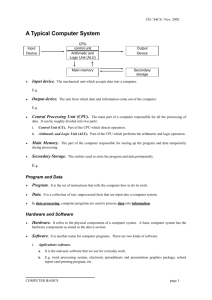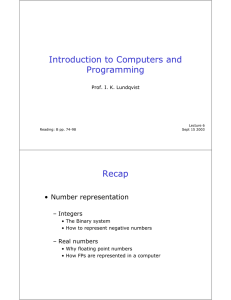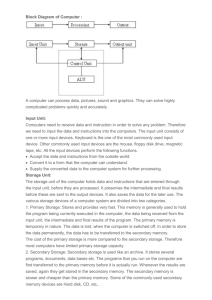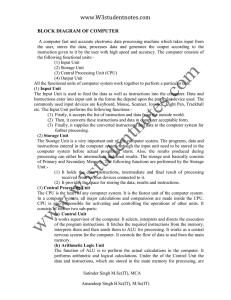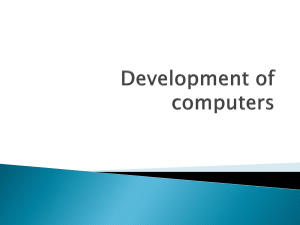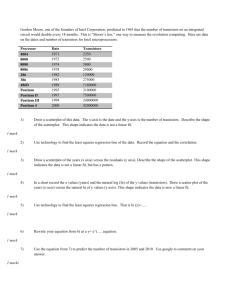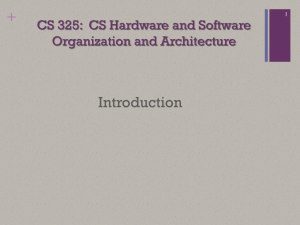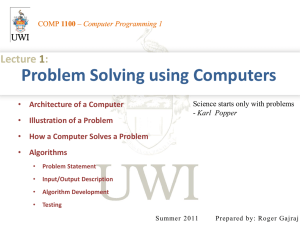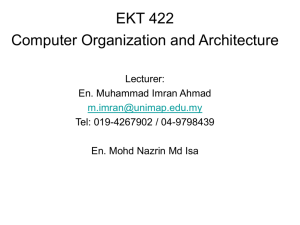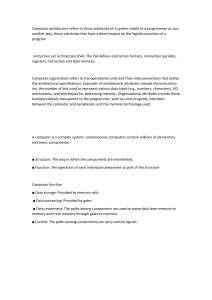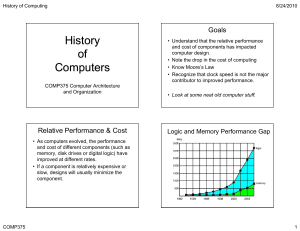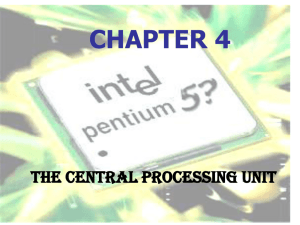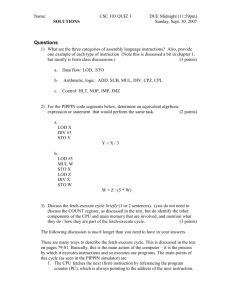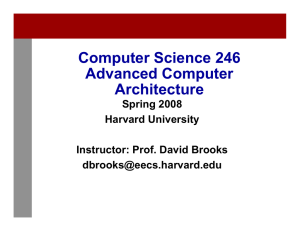Modern Computer Hardware
advertisement
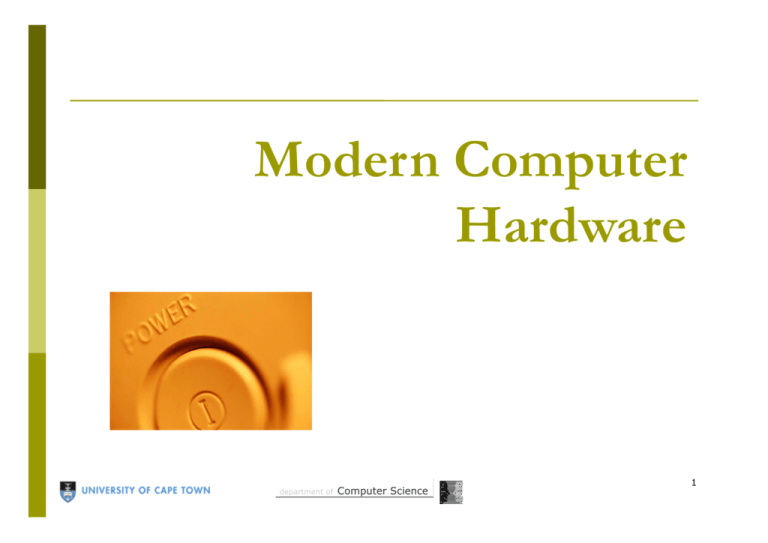
Modern Computer Hardware 1 Hardware vs. Software Hardware refers to the physical parts of the computer. Hardware is sometimes referred to as computer components and peripherals. E.g., Motherboard, Hard Disk/Drive, keyboard Software refers to the set(s) of instructions given to the computer to execute one or more tasks. Software is sometimes referred to as programs. E.g., Microsoft Office, Firefox 2 Vacuum Tubes ENIAC (1945) was one of many early programmable digital computers, using vacuum tubes for computation and patch cables for manual programming. 3 1960s to Present First transistors and integrated circuits and finally microprocessors, revolutionised computing, made them small, cheaper, reliable and more general-purpose. ZX80 (1980) IBM PC (1980) Apple MAC (1985) 4 Parts of a Modern Computer 1/3 A vending machine is like a computer 5 Parts of a Modern Computer 2/3 [CPU, Memory, Hard drive, …] 6 Parts of a Modern Computer 3/3 Central Processing Unit (CPU): microchip that performs computation. It usually contains the ALU and CU. Memory (primary storage): microchips that store data which can be accessed while computer is switched on. Random Access Memory (RAM) is volatile and modifiable. Read-Only Memory (ROM) cannot be changed. Hard drive, Floppy drive (secondary storage): store data permanently i.e., the data is not lost when the computer is switched off. Input devices: gather information from the user. Output devices: transfer information back to the user. 7 The Von Neumann Architecture This describes how a conceptual computing device works: Memory stores data and instructions. Control Unit (CU) obtains and executes instructions. Arithmetic Logic Unit (ALU) does calculations. Accumulator is internal ALU storage for some data. Input is process of getting data into machine. Output is process of obtaining data from machine. Most modern computers are Von Neumann machines! 8 The IBM PC and compatibles ... Original IBM PC (1981), 8088, 4.77MHz XT (1983), 8086, 10MHz AT (1984), 80286, 20MHz 80386 (1986), 33MHz 80486 (1989), 66MHz Pentium I (93), 133MHz II (97), 400MHz III (99) 1GHz IV (2000) 2GHz Intel Core 2 (2006), 3GHz 9 Processor Speeds 10 Can Computers Keep Getting Faster? Moore's Law: Number of transistors (speed of computers) doubles every two years. Stopped at Pentium 4! Not possible to cram more transistors Heat dissipation Power consumption Separating distance already very small (< 0.0001 cm) Now use more cores per CPU – currently quadcore, but soon possibly many more cores. Computer scientists must “think in parallel”! 11
